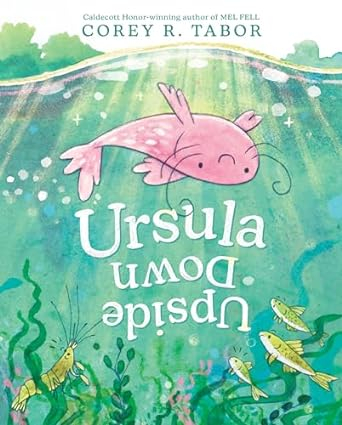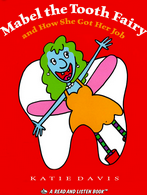As an author and illustrator of children’s books, I know firsthand how powerful picture books can be in shaping young minds. Picture books are not just stories with pretty pictures; they are gateways to understanding the world, sparking imagination, and teaching life lessons that stick with kids long after the book is closed. But here’s the catch—teaching important life lessons through picture books should never ever, ever, ever feel like a lecture. (Oh, and important life lessons also should never feel like a lecture. Not sure if I was clear on that.)
The key is to weave the lesson seamlessly into the story, allowing it to emerge naturally from the narrative and characters. So, let’s dive into how you can write picture books that teach important life lessons in a way that feels organic, engaging, and utterly unputdownable.
- Start with the Story, Not the Lesson
It’s tempting to start with the lesson you want to teach—kindness, honesty, perseverance—and then build a story around it. But that approach often results in a book that feels preachy. No one wants be lectured, amiright? Instead, start with a great story. Who is your main character? What’s their problem? What’s the journey they’re on? As you flesh out your narrative, think about how the life lesson can naturally fit into the arc of the story.

Ursula, by Corey Tabor is a great example. Ursula is happy, swimming upside down. When another fish asks her why she is swimming upside down she’s floored. it says:
And just like that, her whole world flipped. It turned out that she was, in fact, upside down.
On the following page, it reads “Ursula was thoroughly mixed up. Was she frowning or was it a smile?! (It sure didn’t feel like a smile.) Was left, right?! Was right wrong?! Which way was even up?!
The lesson about being happy with who you are naturally emerges from Ursula’s journey. The lesson should feel like a discovery for both the character and the reader, rather than something that’s been imposed on the story from the outside.
- Let the Characters Lead the Way
Your characters should embody the lesson you’re trying to teach. But here’s the trick—let them be flawed. Perfect characters are boring and unrealistic. Kids need to (LOVE to) see characters who struggle, make mistakes, and grow. It’s through these struggles that the lesson becomes meaningful.
Take, for instance, a story about a child who’s learning to share. Instead of making them a naturally generous child, start with a character who’s possessive, maybe even a bit selfish. Show their journey from reluctance to realization as they learn the value of sharing through their experiences. This character-driven approach makes the lesson resonate because it’s rooted in the character’s development, not just in the author’s intention.
- Create a Relatable and Engaging Plot
The plot is the engine that drives your story forward, and it’s also the perfect vehicle for delivering life lessons. But remember, your plot should be engaging first and foremost. If you hook your readers with an exciting, funny, or mysterious story, they’ll be more open to the lesson embedded within it.
Consider using classic plot structures like the hero’s journey or the quest narrative, where the character faces challenges that teach them the lesson along the way. If your lesson is about perseverance, put obstacles in your character’s path that force them to keep trying despite setbacks. The lesson isn’t something you tell the reader; it’s something they experience alongside the character.
- Show, Don’t Tell
This is one of the oldest writing tips, but it’s especially crucial when writing picture books that teach life lessons. Kids are savvy—they totally know when they’re being lectured, and that’s a perfect way to lose their interest. Instead of telling the reader what the lesson is, show it through the actions, dialogue, and emotions of your characters.
If you’re teaching the importance of getting hold of your anger, for example, show a character stomping out the door instead of her screaming, “I’m angry!” Allow readers to feel the lesson in their hearts rather than hear it in their heads.
Let the illustrations and the character’s expressions convey the emotion. If you’re not a professional illustrator, make sure to leave room for the person who will illustrate it. No need to include art notes with things like “he turned red when he got angry.” Trust your illustrator to do their job.
- Use Metaphors and Symbols
Metaphors and symbols are powerful tools in children’s literature because they allow you to teach complex lessons in a simple, visual way. A story about a growing plant, for example, can symbolize the lesson of patience. A character’s journey through a storm might symbolize resilience.
By using metaphors and symbols, you give the reader something tangible to hold onto, something they can see in their minds as they internalize the lesson. Plus, it adds a layer of depth to your story that makes it more engaging for both children and the adults reading to them.
- Keep It Age-Appropriate
When writing picture books, it’s essential to consider the age of your target audience. Younger children may not grasp abstract concepts, so your life lesson needs to be simple and straightforward. Use language and situations that they can relate to in their own lives.
For example, a lesson about friendship for preschoolers might focus on sharing toys or playing together, while a lesson for older children might explore deeper themes like loyalty or forgiveness. Tailoring your lesson to the developmental stage of your readers ensures that it hits home without overwhelming them.
- End with a Resolution, Not a Moral
Finally, wrap up your story with a satisfying resolution rather than a moral. The character needs to have grown or changed in a way that reflects the lesson, but resist the urge to spell it out. (That’s the lecture no one wants!) Trust your readers to get the message on their own.
A great picture book doesn’t need a “The End” followed by “And the moral of the story is…” The lesson should be implicit in the character’s journey and the choices they make, leaving the reader with a sense of satisfaction and understanding. In other words, you want them to be so satisfied they pick up that book again and again.
Writing picture books that teach important life lessons is such a delicate balance. It requires a keen sense of storytelling, an understanding of your audience, and a deep respect for the intelligence of young readers. By focusing on story first, letting characters drive the lesson, and using tools like metaphor, symbolism, and show-don’t-tell techniques, you can create a picture book that not only entertains but also imparts wisdom in a way that feels natural and memorable. So, go ahead—craft stories that touch hearts, spark imaginations, and teach life’s most important lessons … just remember not to lecture and you’ll teach that lesson and create a great story.



